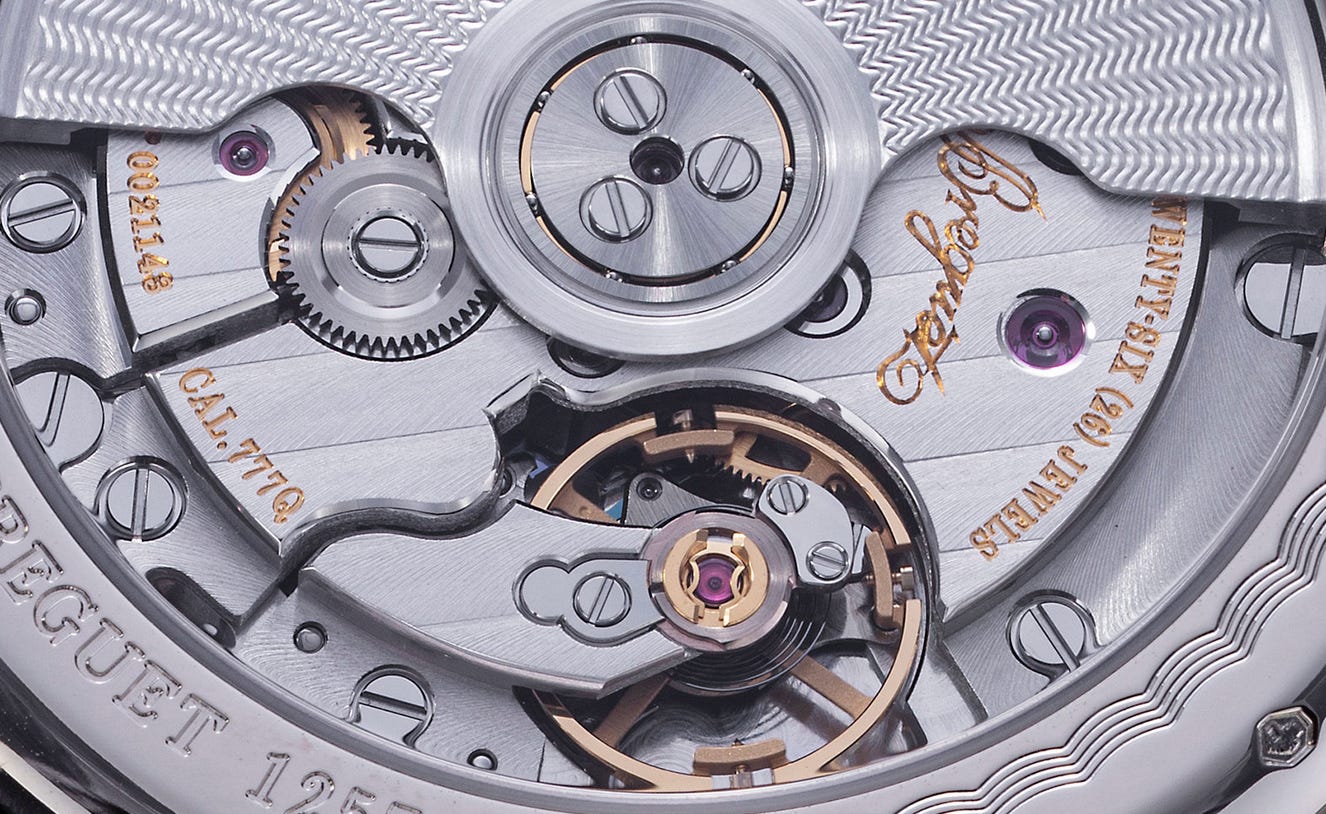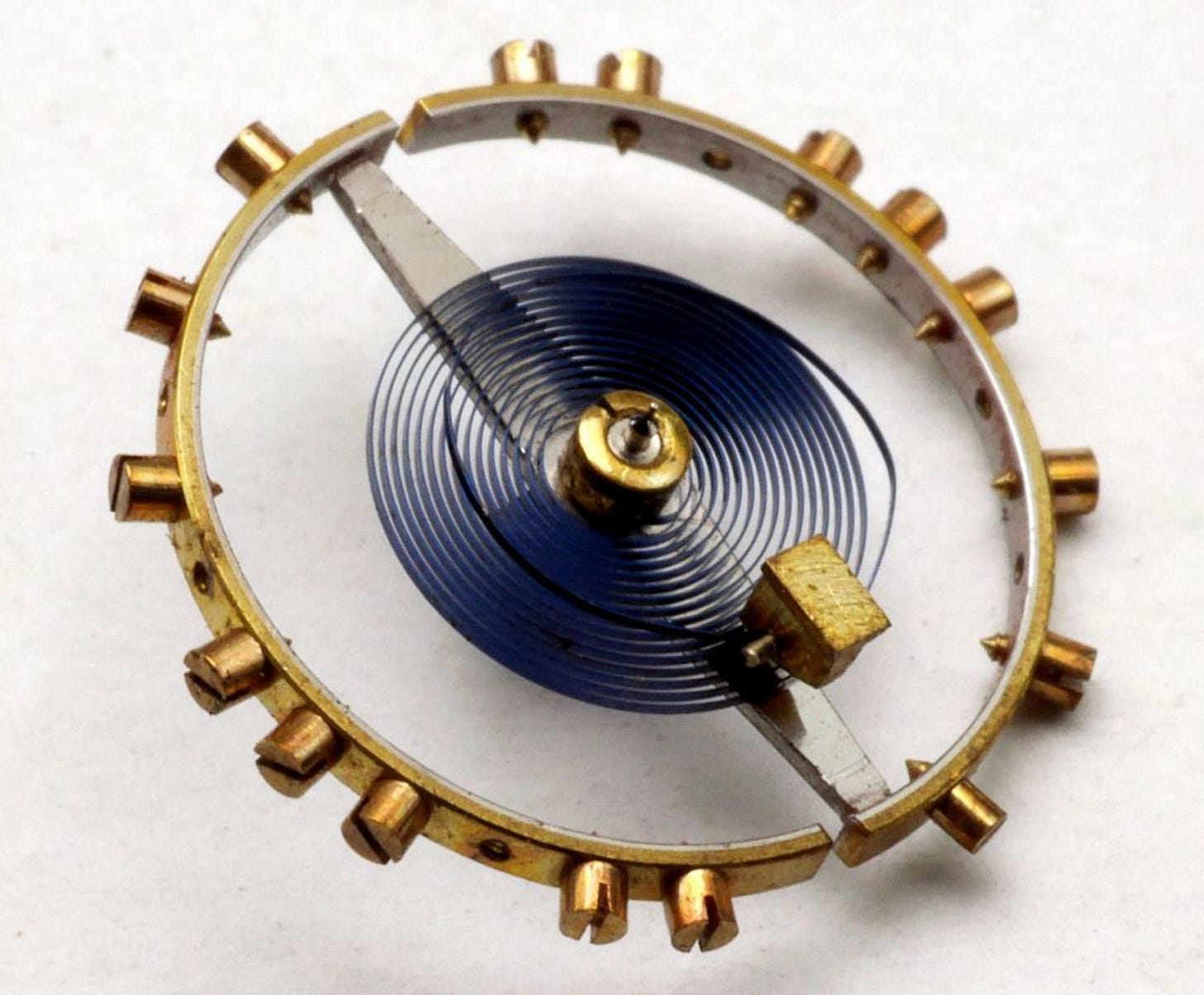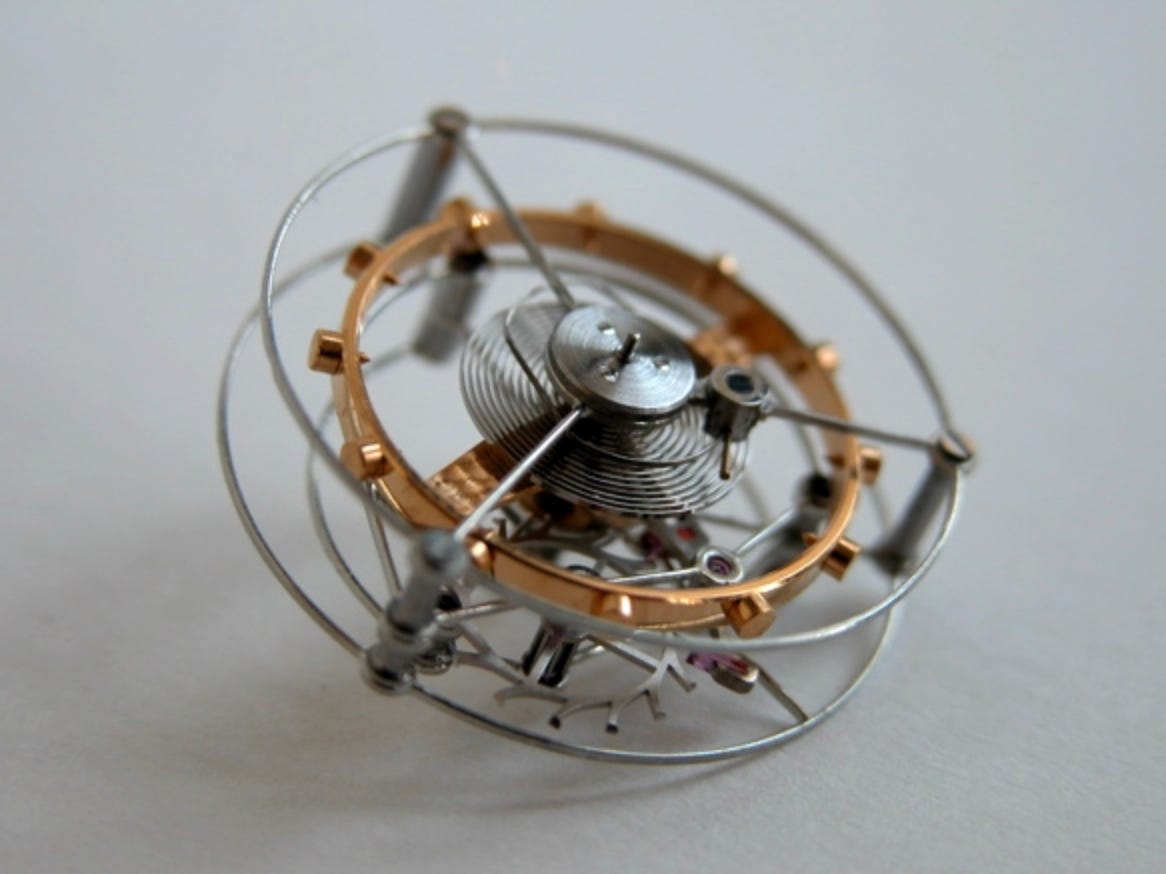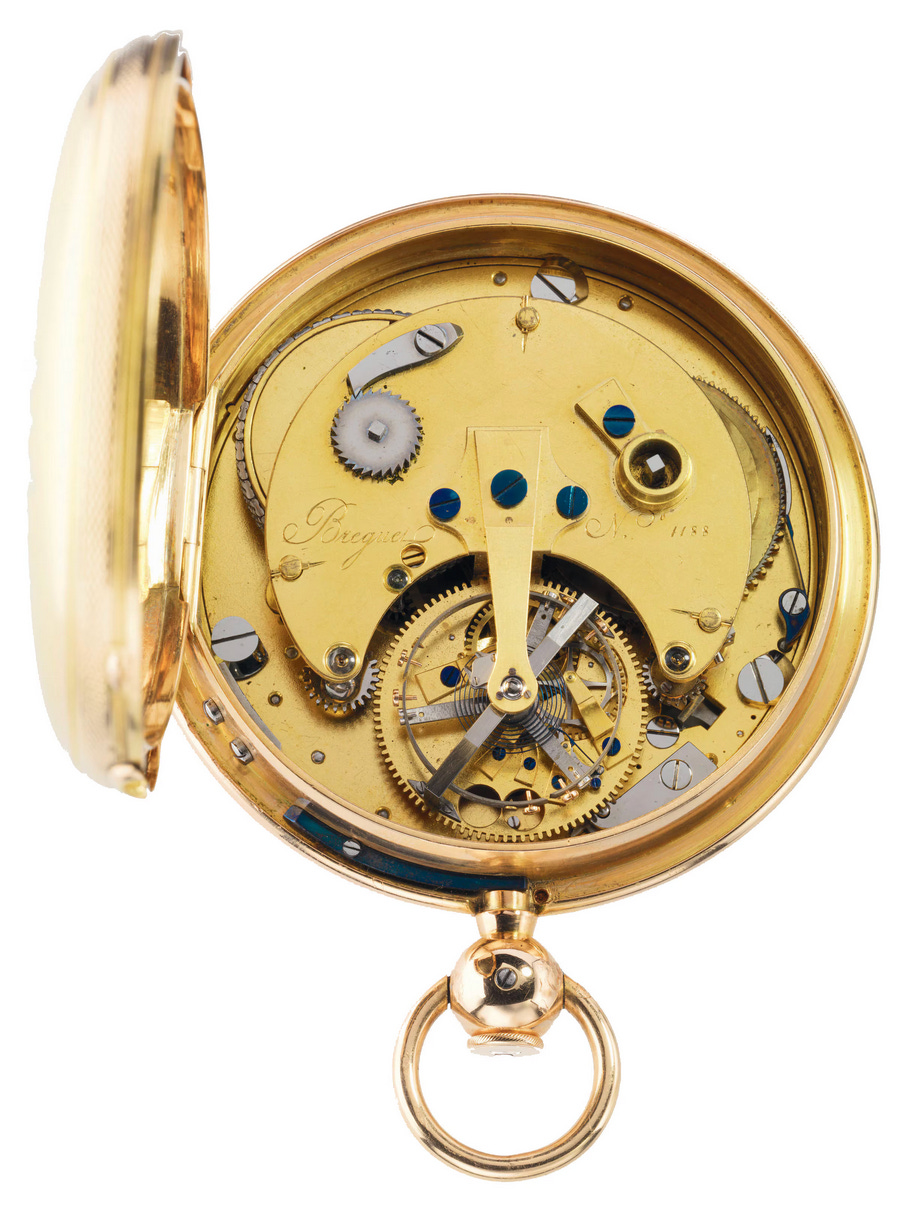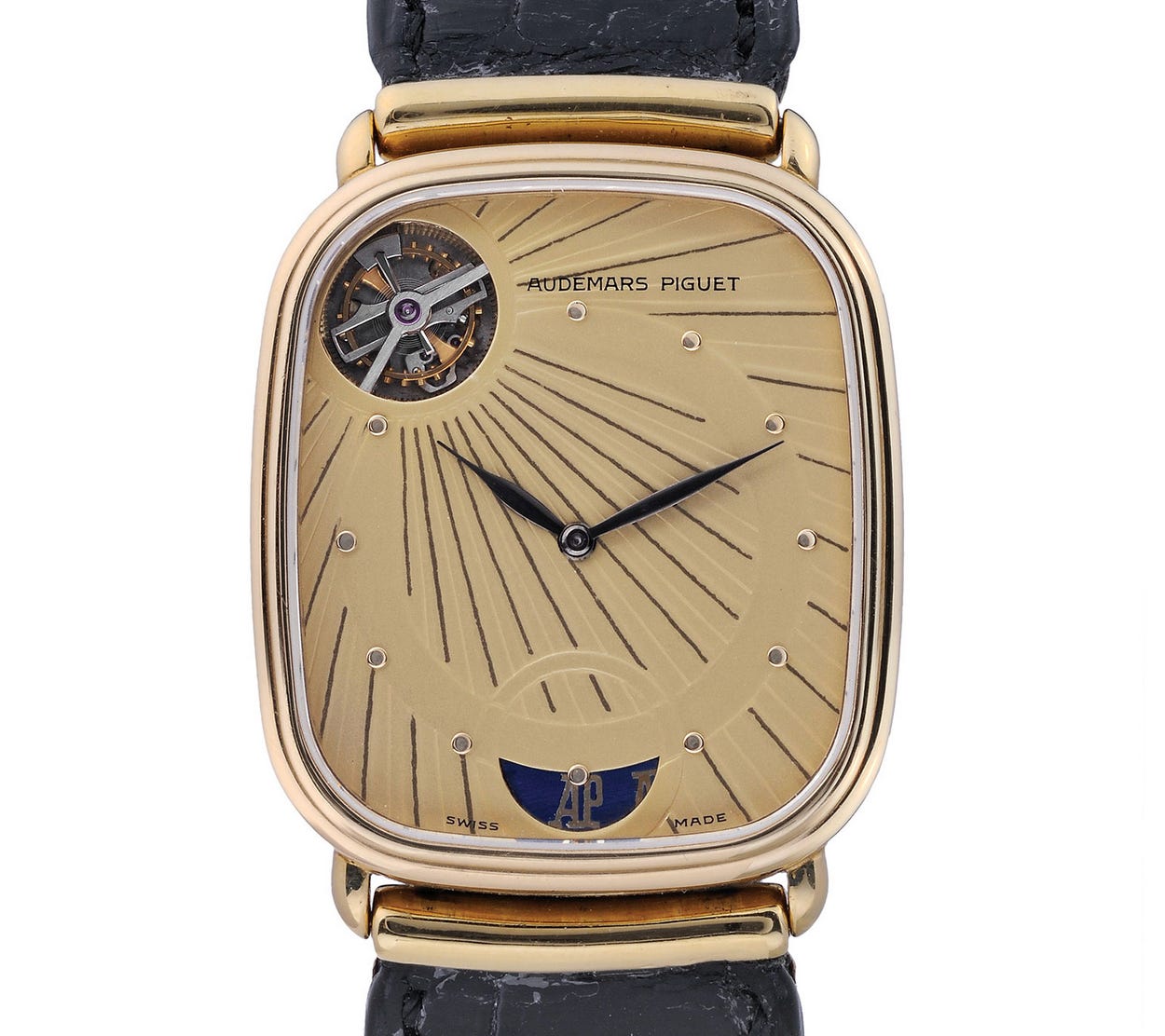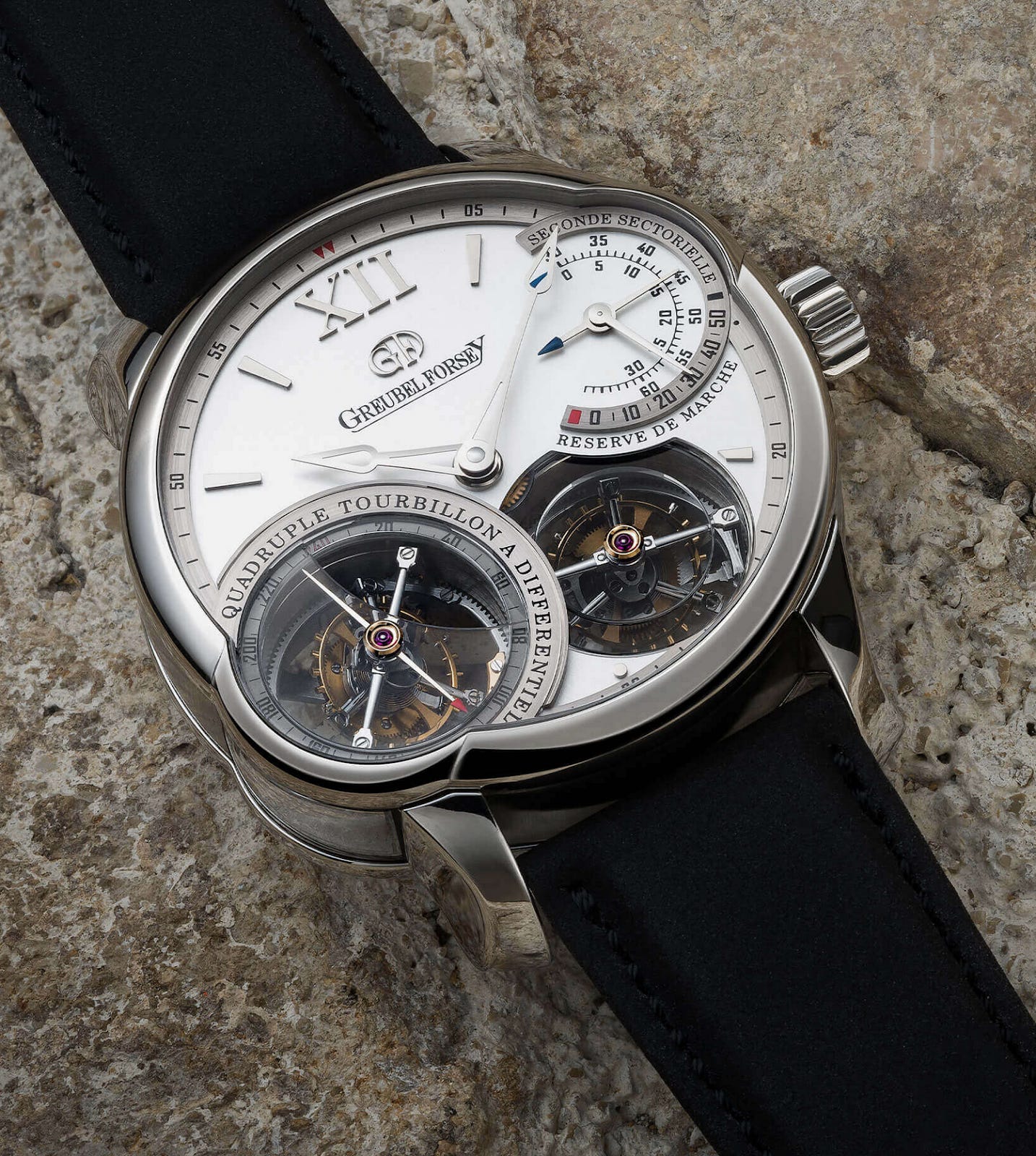Watchmakers often promote the Tourbillon as a mechanism that improves the chronometric1 performance of the watches they create. Is this true, or is it just a marketing strategy? Is the Tourbillon more than just a very complex, very expensive and fascinating watch mechanism?
Abraham Louis Breguet patented the Tourbillon in 1801. In his patent application, Breguet described his invention as a mechanism capable of minimizing the effects of gravity on the regulating organ2. In fact, Breguet designed the Tourbillon to average out the irregularities in the rate of the balance wheel oscillations, caused by the vertical positions in which pocket watches were worn, and the weight inconsistencies of their balance wheels. This, knowing that normalizing the rate of the balance wheel oscillations was key to improve the precision of the watch.
Fig. 1 - The balance wheel and hairspring of a watch
A problem of precision
In 1675, Christiaan Huygens introduced the balance-hairspring system, an innovation that significantly changed the course of watchmaking, making it possible to further miniaturize watches and greatly improve their precision. Since the time of Huygens, the balance-hairspring system has remained the most important part of a mechanical watch, because it determines the speed at which the watch runs. Having control over the running speed of the watch means having control over its precision.
Both the poise of the balance wheel - the even distribution of weight around its ring - and the elastic properties of the hairspring, are designed to keep constant the time intervals between the balance wheel oscillations. In his day, Breguet knew that due to the force of gravity, the regulating organ would lose or gain speed, if it remained in the same position for too long, causing delays or advances in the measurement of time. He observed that gravity affected the operation of the balance wheel differently, depending on the vertical position of the watch. For each position, for example crown down or up, crown right or left, the balance wheel oscillated at a different rate, creating an inaccuracy in the measurement of time.
A question of balance
When a balance wheel is poised, the weight is evenly distributed around its ring and the center of gravity coincides with its axis of rotation. Under these conditions, the force of gravity does not interfere with the regularity of the balance wheel oscillations, regardless of the position of the watch. Due to the rudimentary state of manufacturing techniques in Breguet's time, the balance wheels were rarely poised. The center of gravity did not coincide with the geometric center of the balance wheel, where the axis of rotation is located, and the force of gravity influenced the regularity of the balance wheel oscillations, causing delays or advances to the display of time. Compensating screws around the balance ring were used to adjust the weight distribution to an even configuration.
Fig. 2 - Split bimetallic balance wheel with compensation screws
As the example in Fig. 2 shows, the balance wheels in Breguet’s time had a split bimetal structure, with brass on the outer edge and steel on the inner edge of the balance ring. Such structure counteracted the contraction and expansion of the balance hairspring caused by temperature variations3. However, it also made the balance wheels more difficult to adjust to achieve poise.
Imagine for a moment the front wheel of a bicycle, free to move. The valve on the wheel creates an uneven distribution of weight around the wheel rim. If we put the wheel in a vertical position, under the effect of gravity, the position of the valve causes the wheel to rotate towards the bottom. If the wheel is in a horizontal position, the valve does not affect the position of the wheel.
Similarly, if a pocket watch is in a vertical position, and the balance wheel is not perfectly poised, the rate of oscillation of the balance wheel will be influenced by the force of gravity, and the wheel will oscillate faster or slower. Whereas in a horizontal position, the watch will not be affected by the force of gravity.
How does a tourbillon work?
With his invention, Breguet placed the regulating organ and escapement (escape wheel and anchor) inside a rotating cage, which he called the Tourbillon. The cage rotated continuously at a controlled speed, along a single axis, completing one rotation in one minute4. During the rotation, the cage passed through all the vertical positions, at a constant rate, in order to compensate for the balance wheel rate disturbances created by the position of the watch and the poise errors. On average, the Tourbillon was netting off the balance wheel rate disturbances; this way Breguet was able to reduce the effects of gravity on the regulating organ, improving the watch's precision.
Breguet's Tourbillon was a complex mechanism requiring long production times and was expensive to produce. The construction, finishing, assembly and adjustments of the Tourbillon's components were done by hand, with handcrafted tools. The manufacturing of the cage required painstaking precision, from the watchmaker. It consisted of many components, between 40 and 80, which were very small and had to be assembled in a confined space inside the watch case. The adjustment process involved long hours of observation and fine-tuning.
Fig. 3 - Example of a Tourbillon cage
The evolution of the Tourbillon after Breguet
The first Tourbillon was sold in 1805: it was Breguet's pocket-watch No. 1801. The following year, in 1806, Breguet presented his invention to the public at the National Exhibition of Industrial Products held in Paris. Between 1805 and 1823, the year of Breguet's death, only 35 Tourbillons were sold (see Fig.4). Till the end of the 20th century, Tourbillons were produced for nobles and aristocrats, at the request of collectors, as case studies in watchmaking schools, or to compete in chronometry competitions. The development of these Tourbillons was the prerogative of a few Maisons such as Patek Philippe, Omega and Audemars Piguet, which had brand heritage and the highest technical expertise in the field of watchmaking.
Fig. 4 - Tourbillon pocket watch No. 1188 sold to Don Antonio de Bourbon, Infante of Spain, in 1808
At the beginning of the 21st century, it was estimated that only about 1000 Tourbillons had been produced since 1801. The first Tourbillon movement for a wristwatch was made by the French company LIP in the 1930s. The LIP movement, however, remained a prototype and it was never commercialized. A commercially produced Tourbillon wristwatch became a reality in 1986, when Audemars Piguet launched the world's first automatic wristwatch with a Tourbillon. Audemars Piguet's timepiece was also the thinnest and lightest wristwatch with a Tourbillon, weighing only 134 grams and measuring only 4.8 mm high. To this day, it features the smallest and the lightest Tourbillon cage ever made.
Fig. 5 - Audemars Piguet and the Ultra-thin Automatic Tourbillon Caliber 2870
The reduced practicality of the Tourbillon
Technological advances in watchmaking have made the Tourbillon obsolete as a solution to improve the precision of a watch. Modern watches do not need a Tourbillon to be precise.
Since Breguet, manufacturing techniques have evolved considerably, improving the poise of balance wheels. The use of new materials have made the balance-hairspring system virtually immune to temperature variations and the influence of gravity. In 1919, the Swiss physicist Charles-Edouard Guillaume developed a nickel-iron-chromium alloy in which elasticity remained constant with temperature variations and had a low sensitivity to magnetic fields. It was called Elinvar. The use of Elinvar balance hairsprings combined with monometallic balance wheels made of non-ferrous hard alloys has become common in modern watchmaking.
In 2001, Ulysse Nardin presented the Freak concept watch with a silicon escapement wheel. This innovation was subsequently taken up by many other Maisons to develop and use silicon balance hairsprings in the regulating organ. Silicon is a material resistant to magnetic fields, lighter than metal and less prone to deformation due to gravity. It has superior resistance to corrosion and is less vulnerable to shocks.
The impracticality of a Tourbillon is also due to a number of disadvantages inherent in its structure. A movement that includes a Tourbillon must overcome greater inertia than a normal watch. This means that a watch with a Tourbillon will need a more powerful mainspring to deliver the energy required to move all the movement components, including the Tourbillon. Optimizing the energy from the barrel to the regulating organ therefore becomes very important in a watch with a Tourbillon. Every component of the wheel train must be manufactured to the highest standards of quality and engineering precision. For example, the teeth of the wheel train must be perfectly formed and polished to optimize the transfer of energy from the barrel to the escapement and regulating organ. In addition, because the Tourbillon cage creates excess wear and tear, it must be as light as possible (e.g. Titanium) and perfectly balanced to avoid introducing further imbalance errors.
The Queen of complications: a historical naivety?
Collectors and enthusiasts often refer to the Tourbillon as the queen of complications. While some of them see the Tourbillon as a supreme expression of horological craftsmanship, others view it as anachronistic and a historical ingenuity that solved a chronometric performance problem of a specific historical moment. Its confinement to the shelfs of horological history became apparent with the advent of the wristwatch, in the early 20th century. The human wrist became the new Tourbillon, capable of continuously changing the orientation of the watch, and achieving a similar result as Breguet's rotating Tourbillon cage. At this point, the Tourbillon lost its usefulness and importance and the production of Tourbillon watches became rare. That was so until the quartz revolution of the 1970s and early 1980s, when a revival of the Tourbillon took place.
In order to compete with quartz watches, several Swiss manufacturers took refuge at the high end of the market and shifted their focus from precision to technical creativity and luxury. This renaissance of mechanical watchmaking after the quartz revolution brought new attention to the Tourbillon as a haute horlogerie product, prized for the elaborate craftsmanship its construction required and for its fascinating aesthetics. Similar to luxury mechanical watches, the Tourbillon was no longer created to be useful, but to be captivating to look at.
Thus new Tourbillons were created, more complex, more impressive, and more beautiful. The Tourbillon entered the 21st century as a symbol of an exercise in innovation, an investment in the market positioning of luxury brands, and an ongoing quest to push the limits of ingenuity in miniaturized mechanical engineering.
More complex and more mesmerizing
The Tourbillon created by Breguet revolved around a single axis. In 1977, English watchmaker Anthony Randall invented the double-axis Tourbillon and installed it in a carriage watch5.
In 1986, Audemars Piguet developed the first automatic Tourbillon, with calibre 2870, which is often referred to as a milestone in the renaissance of mechanical watchmaking, following the quartz revolution.
In 2003, the German watchmaker Thomas Prescher developed the first flying Tourbillon with a double axis in a pocket watch, characterized by a cage rotating around two axes, both rotating once per minute. The following year, outdoing himself, Prescher presented the first triple-axis Tourbillon in a wristwatch.
Also in 2004, the Maison Greubel Forsey presented its Double Tourbillon 30˚ in a wristwatch, featuring a Tourbillon cage that rotated once per minute and inserted at 30˚ inside another cage that rotated once every four minutes.
Taking the concept of multi-axis rotation to a new level, Jaeger-LeCoultre introduced the Gyrotourbillon, in 2004, featuring an additional axis of rotation perpendicular to the main axis. In a true demonstration of technical expertise and precision, Jaeger-LeCoultre later introduced several variants of the Gyrotourbillon that included major complications such as the perpetual calendar and the equation of time.
Last but not least, in 2005, Greubel Forsey presented its Quadruple Tourbillon with two double Tourbillons that functioned independently of each other.
Fig. 6 - Greubel Forsey, Quadruple Tourbillon
Dividing and conquering hearts
The Tourbillon is to be considered a masterpiece of watchmaking art. It was created to contribute to the chronometric precision of pocket watches at the time of Breguet. Today, however, it is technologically obsolete. It remains a historical curiosity, an anachronistic solution to the effects of gravity on the precision of wristwatches.
On the other hand, one does not build a Tourbillon to hide it inside the watch, behind the dial. The Tourbillon is usually displayed on the dial because although it does not contribute to improving the chronometry of wristwatches, it remains to all intents and purposes a mesmerizing mechanism to admire. A very complex and very expensive mechanism, its purpose is to create beauty, and display the watchmaker's ingenuity and dexterity in miniaturized mechanics. The Tourbillon remains to date one of the most sought-after features of modern watchmaking.
The science of accurate time measurement
The balance wheel, together with the hairspring, or balance-hairspring system, is the regulating organ of the watch. The balance wheel is a circular metal ring that oscillates around its own axis, rotating back and forth.
Higher temperatures reduce the elasticity of the hairspring and move the center of gravity of the balance wheel away from the axis of rotation. Both of these changes slow down the speed of the watch, making it slower. With lowering temperatures, the opposite effects occur. For the same temperature change, a split bimetal balance wheel and its hairspring offset each other: the split ends of the balance wheel cause part of the weight to shift inwards towards the center, thus increasing the speed of the wheel, and counteracting the decrease in the rate due to the expansion of the hairspring.
Tourbillons with cages rotating at higher speeds increase precision. However, a higher speed also means a higher energy consumption and a reduction in the power reserve. This is why Tourbillon cages are constructed to be as light as possible, using materials such as titanium.
Carriage clocks were small clocks designed for traveling. They were developed in the early 19th century in France. Incidentally, Breguet invented the carriage clock for the Emperor Napoleon in 1812



